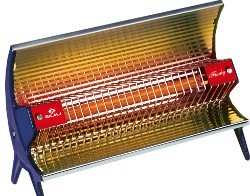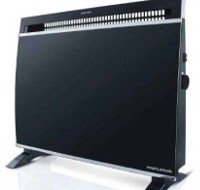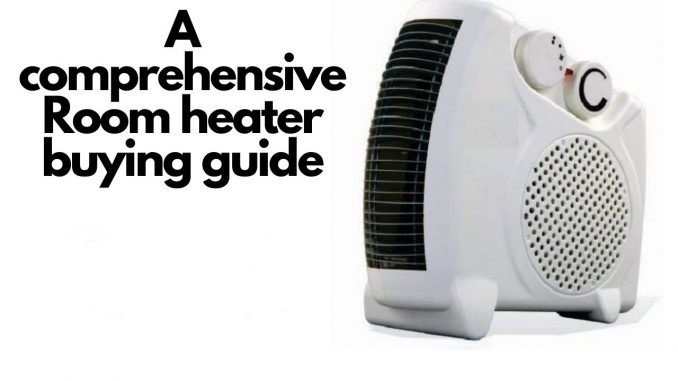Heater Buying Guide 2021
In north India, winters are quite severe, so for sake of our comfort, it is worth investing in a good quality and energy efficient room heater. Having heater in house or office will save yourself from the freezing cold and enables us to move freely and comfortably in this chilly weather. Room heater is a necessity for those who suffer from cold in the winter and help them stay warm and comfortable in winters. It is always better to invest wisely on a good quality, cost-effective and power-efficient heaters as it is not viable to install electric heating system in a house leading to huge power bills.
There are a number of room heaters available in the market and vary in shape, style, cost and many other features. Hence, before taking a buying decision, you should check its specifications and safety features and choose the right one so that you save on your heating bill. With ample options available in the market, it is not easy to choose the best suited model for your home. Our handy heater buying guide will help you find your ideal heater suiting your requirements and budget.
What should be the size of heater ?
Energy efficient Room heaters
Electricity consumption of a room heater depends on its wattage specification. Wattage in simple terms is the amount of power the room heater consume. Infrared heaters consume around 800 to 1200 wattage. The fan heater generally consume 2000 wattage. Few high models of fan heaters consume 1500 wattage. The Oil filled room heaters are best regarding electricity consumption as oil filled room heaters consume 1000 watts at maximum. Apart from that oil filled room heaters work on the basis of heating the oil. Due to the nature of oil once it heated it remains hot for long time they consume very little energy to heat it again.
Room heaters for large rooms
Definitely infrared heaters are not suitable for large room. They are meant for small room and one person. Fan based room are good choice and oil filled room heaters are best option. Fan heaters are meant for medium room and Oil filled room heaters are really meant for large room. As Oil filled room heaters are costlier and price starts from Rs. 10,000 you can consider to adjust with Fan heaters as well.
Heaters come in variable sizes and while selecting it, you should opt for appropriate capacity so that it heats up the whole area efficiently. There are various factors that determine the heater capacity like the climate you live in, ceiling height of room, size of the room, how much sunlight the room recieves, number of floor on which the room is located and of course any other means of insulation. We will provide the handy guide to calculate the capacity of heater accurately so as to provide warm and comfortable environment.
1. Measure the room size (in square feet) by multiplying length with height or width. For example, a 11 ft by 10 ft room measures 110 square feet. To get heater capacity, multiplying room size by 10 which indicates that 1,100 Watt heater is required to heat the space. Calculate BTU (British Thermal Units) by multiplying the number of watts by 3.41. A 1,100-watt heater generates 3,751 (1100 times 3.41) BTU per hour.
2. As a thumb rule, well-insulated room of area 20 square metres will require 2000 Watt electric heater whereas if the same room is poorly insulated, then it will need higher capacity heater of minimum 2400 Watt. In colder areas, you should buy heaters with more heating power.
What are different types of heaters ?
Room heaters can be classified into four major categories based on the method of heating or heating technology, budget and size of the area to be heated.
1. OIL COLUMN HEATER :

Oil filled radiators (also referred to as Oil heaters, Oil filled room heaters) are one of the best heaters, though they take longer time to be heated but they provide heat for a long time even after the heater is turned off. It is also not as noisy as the ceramic convection heater. They are portable electric heaters and come in 1200W or 2400W models depending upon the number of electric elements it contains. In this, the electric elements are immersed in an oil-filled casing. As the resistive elements get heated, the heat is transferred to the oil casing which in turn warms the surrounding air in all the directions via natural convection process.
Pros - Oil column heaters consume less electricity and are preferred over other heater types in terms of safety and efficiency. They are pretty safe for small children as there is no naked flame and do not cause any suffocation or dry eyes and skin rashes. They do not produce any noise and are best suited for heating rooms of all sizes. One of the other major advantage of this heater is that it continues to emit heat for little longer time even after it is switched off as oil being a denser fluid than water, retains heat for longer time duration. They are ideal for you if you have dry skin as they do not dry out the surrounding air.
Cons - These heaters are more expensive and take more time to get heated leading to poor energy efficiency. Also, since oil is the good medium for transferring the heat, the surface tends to get very hot.
Best oil filled room heaters
- Bajaj Majesty RH 11F 2900W Room Heater
- Morphy Richards OFR13F 13Fin Oil Filled Room Heater
- Crompton Greaves CG-ORH3 Room Heater
- Usha OFR 3209F Oil Filled Room Heater
2. RADIANT HEATER :

Infrared heaters (also known as Halogen, Quartz, Radiant room heaters) are reasonably priced and probably the cheapest heater available in the market. They use quartz or halogen glowing tubes which generate heat through infrared radiation. When they are switched on, electric current is passed through the elements and electrical energy is converted to heat energy which is radiated out directly onto you. They are covered with metal grills so that you do not have direct access to heating elements and burn yourself. They heat up the room very fast as they provide instant and lot of intense heat and are ideal for smaller spaces like bathrooms or smaller rooms where heat is required for short span of time.
Pros - These heater models are reasonably priced. They are portable and can be wall mounted if required. They are very effective in smaller areas they produce quick and intense radiant heat. They provide personalised heating and are very effective in cold environment. They offer noiseless operation as they have no fans.
Cons - They are highly inefficient when used for longer time spans. For longer time duration, consider oil-filled heater or electric panel heater. These heaters are not safe for children or pets and you have to be extra cautious to prevent any kind of mishaps while using them as they do not have temperature control and can even lead to fire if kept too close to flammable materials. They are best suited for spot heating but their heat diminishes immediately as soon as the heater is switched off. One of their major drawback is that they are not effective in larger and crowded spaces
Best infrared heaters
- Bajaj Flashy Radiant room heater
- Usha 3002-QH Halogen Room Heater
- Orpat ORH -1410 Radiant Room Heater
- Bajaj RHX 2 Halogen Room Heater
- Orpat OQH-1230 800-Watt Quartz Heater
3. PANEL HEATER :

Electric Panel heaters emit heat using natural convection as well as radiant heat emission process. They comprise of large panel surface which heats up the cool surrounding air and results in evenly distribution of heat throughout the room. They are ideally suited for dry climatic conditions as they maintain the room's moisture level and are perfect for patients suffering from asthma and various allergies. Panel heaters are normally wall mounted and offer efficient, cost-effective and permanent heating solutions in medium to large sized rooms like lounges, halls and bedrooms. They can be portable as well as can be permanently attached to wall or even a ceiling. They consume less power and emits less intense heat than other portable heater models like convection fan heaters or radiant heaters. They are safer to use and consume approximately one-third of electricity as compared to radiant heaters.
Pros - They are much cheaper and require minimal maintenance. They are light weight and provide noise-free experience. They are safe to use as they complement heat pump heating.
Cons - They are not waterproof hence should be used with proper caution in bathrooms. They are also not advisable in places where strong and intense heat is required in short time span.
4. FAN HEATERS :

Portable fan heaters (also known as Ceramic heater, Convection room heaters, Blower room heaters) are very reasonably priced and provide instant heat. They have a resistive heating coil which converts electrical energy to heat energy. The cool surrounding air is drawn inside using a fan and the heating coil warms the air and is propelled out into the room. They are not suitable for people having respiratory problems or allergies and can also cause dry eyes and sore throats as they dry out the air and circulates it throughout the room along with some dust particles. They are inefficient in case you want to heat bigger rooms and for longer time duration. They are highly suitable for short term use in smaller rooms like bedrooms, study rooms having size upto 150 square feet. While buying the heater, make sure your heater is fully equipped with safety features like thermostat control (to control the room temperature and amount of heat being produced) and speed control (to control fan speed). They should not be kept close to water to avoid any kind of accidents and should be preferably placed on floor for even distribution of heat in the room. These heaters should not be covered while in use otherwise it can lead to fire hazard.
They are available in two different shapes- tall and slim, and short and flat. The taller model is better among the two as it circulates more air faster.
Pros - They provide instant and cost-effective heating solutions in small to medium sized rooms for short periods of time. They are very cheap, portable and can be easily carried anywhere.
Cons - These heaters have high operating cost when used in larger areas for longer time duration leading to high power bills. They are noisy and affect the health of asthamatic and allergic patients as they dry out the air causing dryness in atmosphere.
Best fan heaters
- Orpat Oeh-1220 Fan Room Heater
- Orpat OEH-1250 Fan Room Heater
- Usha Hc 812 T Thermo Fan Room Heater
- Orpat OEH - 1260 Fan Room Heater
- Bajaj Majesty RX 14 Wall Mount Heat Convector Fan Room Heater
- Usha FH 3212-C Fan Room Heater
- Usha 3213-H PTC Fan Room Heater
How to minimise electricity bills by choosing the right heater ?
There are a number of features to look out in a heater that will help you save money on your energy bills upto 60% as follows :
1. Variable Thermostat : Thermostat registers the room temperature and automatically switch the heater on or off to maintain that comfortable temperature. Normally all heaters have built-in thermostats to conserve electricity.
2. Adjustable Timers : Timers are used to switch on the heater at a desired time. You can set the timer to warm the kitchen or room at the lowest temperature and auto-off timers will always turn your heater off before leaving to provide you customizable comfort.
Auto-shut off : This feature is provided in all latest heater models to ensure safety as it automatically shuts off the heater if it senses low amounts of oxygen in the air or accumulation of carbon monoxide preventing overheating and malfunctioning of equipment.
Fans : Fan helps the room warm up faster as it circulates the air throughout the room more evenly and prevents accumulation of heat near the ceiling.
Fuel : Heaters are either oil filled or non-oil filled. Oil-free heaters tend to heat up more quickly, and are generally lighter and more portable than oil-filled heaters. Oil-filled heaters take longer time to warm the room and hence are less energy efficient but they retain the heat for longer time span even after it is switched off.
Remote control : It is a very handy device and you can easily access on-and off-control from anywhere in the room.
Use of Portable heater can be beneficial as you can keep it at a place where you spend maximum time with thermostat at a low position.

